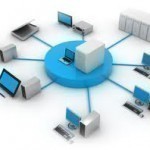ODBC (Open Data Base Connectivity) is an interface to access databases via SQL queries. ODBC can be used as an access tool to various databases such as MS-Access, dBase, DB2, Excel, and Text. Through these Call Level Interface (CLI) specifications of the SQL Access Group, the OBDC allows a neutral way of accessing the data stored in personal computers and various databases. It was first created by Microsoft and Simba Technologies. ODBC 1.0 was initially released in September 1992, and eventually became a part of the international SQL standard in Read More
Chat Rooms

A chat room is a virtual place on the Internet where people from all walks of life from around the world can get together in one place and textually chat with one another. The only two things a person needs to connect to a chat room are a computer and a internet connection of any speed. There are, however, Chat Rooms that require client programs, as with IRC (Internet Relay Chat). The term chat room was coined by the mass media as the World Wide Web began to take off Read More
What is XML? (eXtensible Markup Language)
XML (Extensible Markup Language) has become one of the most widely used methods to represent information in a self-describing format across computing devices running all manner of operating systems and programming languages. XML is designed to transport and store information independent of how it may be viewed, displayed, or otherwise processed in a simple, formatted manner. Similar to HTML in concept, the qualities of XML allow it to be used as a universal data format that web services and other applications can leverage to build complex web services or Read More
Deploying Software through Group Policy
When Active Directory was launched in Windows 2000, one of its key design features was to ease the process of deploying software within an organization. To this end, Microsoft included the ability to deploy and distribute software with Group Policy. IntelliMirror technologies include Group Policy software installation to simplify the management necessary for large quantities of users and computers. The Software Installation and Maintenance component of the IntelliMirror technologies can be used to publish applications over the network. Publishing is the terminology used to make applications available for installation from Read More
Considerations in Planning a Network Infrastructure

Defining Network Infrastructure A network can be defined as the grouping of hardware devices and software components which are necessary to connect devices within the organization, and to connect the organization to other organizations and the Internet. Typical hardware components utilized in a networking environment are network interface cards, computers, routers, hubs, switches, printers, and cabling and phone lines. Typical software components utilized in a networking environment are the network services and protocols needed to enable devices to communicate. Only after the hardware is installed and configured, can operating systems Read More
Memory Cards
Memory cards, also popularly known as media cards and flash cards, are small, detachable devices the main purpose of which is electronic data storage. You can compare them to diskettes in this regard. Moreover, memory cards can store multiple types of data. They can store games and other applications, music; videos, pictures, documents, and a lot more. Memory cards have various applications. They are commonly used for digital photography. They are also used as data storage modules for personal digital assistants (PDA), cell phones, portable music and video players, television, Read More
How to Prevent Hotlinking
Hotlinking, also known as deep linking, occurs when one web site links directly to graphics files on another web site. The site which serves the images pays for the bandwidth. The site which links to the images gets free content for its users. Many webmasters object to being hotlinked to, but hotlinking is difficult to prevent. Preventing Hotlinking with Apache On an Apache web server, you can use mod_rewrite and .htaccess to prevent any web page other than your own from accessing your graphic images. Your .htaccess rule to block Read More
JavaScript Redirect

A JavaScript redirect can be used to redirect a visitor from one webpage to another. This could be your site moving to a new domain. Some download sites have a time delay during redirections, which is basically the JavaScript redirect in action. If you are having some external servers mirror your site for you, you would need JavaScript redirect. Implementing the JavaScript Redirect First open up your HTML page (most often the index.html) and within the tags, place the following code: <script type=”text/javascript”> <!– window.location = “http://www.byteguide.com” //–> </script> Note Read More
How to Delete Deleted Files Permanently

Contrary to popular belief, deleting files from the Recycle Bin does not completely remove the file from the computer. Instead, deleting a file simply tells the computer that the memory it was using is no longer needed. When the computer needs the memory for other files, it overwrites the original information. However, until the file is overwritten with new data, it remains on the computer under a different name and can be restored using file recovery software. In order to completely remove a file, it is important that new data Read More
PCMCIA
PCMCIA stands for Personal Computer Memory Card International Association, an international standards body and trade association based in San Jose, California. Founded in 1989, PCMCIA aimed to create a standard for connecting peripherals to portable computers. PCMCIA developed the PC Card. PC Card or PCMCIA Card PC Cards are credit card sized removable devices designed to add extra functions to portable computers. Introduced in 1990, the cards were first known as PCMIA cards as the original standards were established by the Personal Computer Memory Card International Association. PC Cards are Read More


Share on: